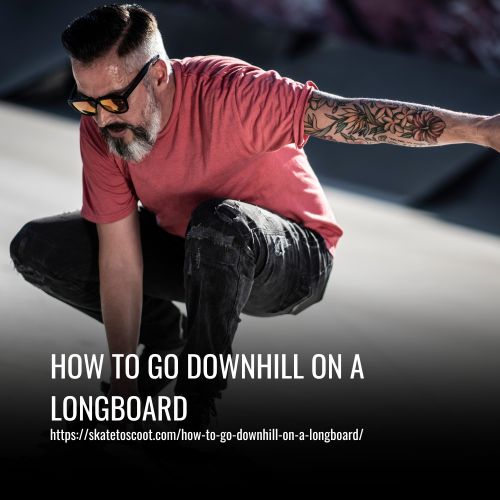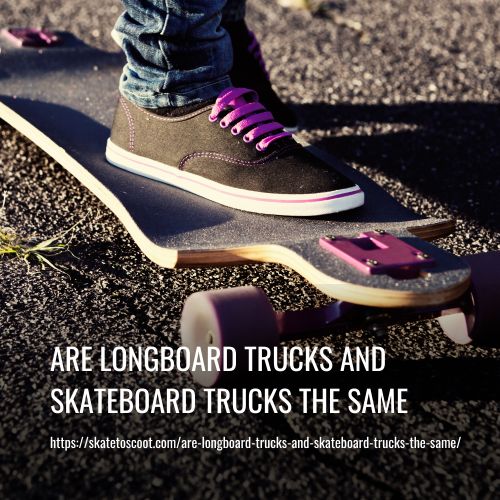As an Amazon Associate we earn from qualifying purchases.
Snowboarding and longboarding have similarities in terms of riding stance and turning. However, there are some key differences. In snowboarding, your feet are strapped to the board and you ride on one edge. In longboarding, your feet are free to move and you ride with all four wheels on the ground. Additionally, stopping can be more challenging on a longboard compared to snowboarding.

Similarities Between Snowboarding and Longboarding
Snowboarding and longboarding have a lot in common. Though these two activities appear quite different, if you take a closer look, you’ll see there are some similarities between them that make them ideal for those considering trying either one of them for the first time.
1. Similar Balance and Coordination
Snowboarding and longboarding both share many similarities when it comes to balance and coordination. Both board sports use the same basic stance with your dominant foot placed forward, and you’ll move in the same direction regardless of which one you are doing.
The lower body and core muscles are essential for controlling each board, as well as leaning heelside or toeside to direct the board to the desired location. By using these same basic techniques in both boarding sports, you will be able to gain better control over each one through careful practice.
2. Endless Fun
Snowboarding and longboarding both provide an endless amount of fun. All the stoke you get when you’re on a board flying down a mountain or weaving through city streets can’t be replicated in any other activity. Whether you’re snowboarding or longboarding, they both give you freedom and excitement that is hard to come by.
The two activities are very complementary; if one isn’t available, then the other will do just fine! You can have just as much fun longboarding instead of snowboarding, and vice versa. These two sports are sure to make your heart race with joy.
3. Muscles
Snowboarding and longboarding both require similar muscle groups for progression. For both, you’ll need strong legs for absorbing the terrain and maintaining balance, as well as core strength for staying upright on turns. Also, arm strength is beneficial for keeping your balance.
With regular practice of either activity, these muscles will develop over time and help you ride better than before.
4. Stance
Stance is one of the main similarities between snowboarding and longboarding. The stance you take while riding a longboard and the placement of your feet are identical to those used while snowboarding. It’s true that there may be a slight difference in the back foot, but it’s not enough to pose any difficulty when transitioning from one board to another.
If you’re already comfortable with your stance on a longboard, then chances are, you’ll find your footing on a snowboard quickly and smoothly.
5. Push
When it comes to longboarding and snowboarding, the push is similar in both cases. To gain the necessary momentum, you have to give yourself a push with one foot. In snowboarding, many riders use their front foot rather than their back foot to gain momentum.
However, since most people go snowboarding down hills specifically, there’s less need for the push than when it comes to longboarding.
6. Turning
Turning is an essential skill for both snowboarding and longboarding, and the technique is actually quite similar. In order to make a turn on a longboard, you must press down on the edge of the board and shift your body weight in the desired direction.
Snowboarding follows similar principles to longboarding, so making turns on the slopes won’t be a challenge if you’re familiar with longboarding.
7. The Takeaway
The takeaway from this is that while snowboarding and longboarding are similar, they are still different sports. An exceptional longboarder may find the transition to snowboarding a bit easier, but will still have to learn the fundamentals of the sport in order to be good at it.
At the same time, having some basic balance and grip on a longboard can also help with one’s learning curve when transitioning to snowboarding. Ultimately, both sports require practice and perseverance in order to master.
Differences Between Snowboarding and Longboarding
Snowboarding and longboarding may have a lot in common, but they do also have several distinct differences.
1. Snowboards Have an Edge
One of the biggest distinctions between snowboarding and longboarding is that snowboards have an edge, made of metal. This provides riders with control on the slopes, which makes for a unique experience compared to other board sports. In contrast, longboards don’t have an edge and are simply elevated above the ground through their trucks and wheels.
It’s definitely a challenge for those who have been longboarding for some time to adjust to using an edge when it comes to snowboarding, while at the same time, those who are transitioning from snowboarding to longboarding must get accustomed to not having an edge as a means of control.
It could be a subtle or major adaptation they have to make—it all depends on each individual’s level of skill in either sport.
2. Snowboards Use Bindings
Snowboarding requires the use of bindings, whereas longboards don’t. Bindings attach your feet to the board and allow you to have greater control when riding. They also play a big role in transferring power from your body to the board, giving you better control over your movements.
Longboards, on the other hand, don’t need bindings as it allows riders to have more freedom to push their boards forward without relying solely on gravity for momentum, which is a different approach compared to snowboarding which requires bindings for maximum power transfer and control.
3. Longboarding is More Accessible
Longboarding is the more accessible option when compared to snowboarding. You won’t need a lot of equipment or a mountain full of snow, all you’ll need is your longboard and a smooth surface for it to roll on.
This means that you don’t have to spend nearly as much money and can get started with longboarding faster – so it’s ideal if you’re just getting into either sport!
4. Terrain
One of the main differences between snowboarding and longboarding lies in the terrain that each is suitable for. Longboards are designed to be used on dry ground—concrete or asphalt—while snowboards are meant to ride on snow.
This distinction is what sets them apart, and it’s why a person who is experienced in one type of board cannot necessarily transition easily to the other.
5. Speed
Speed is where the major differences between snowboarding and longboarding lie. While snowboarding allows riders to have complete control over their speed with just a flick of their heel, longboarders need to expend more effort in controlling their speed on dry ground.
6. Tricks
Tricks are certainly possible with both snowboarding and longboarding, but there’s a huge difference in how they’re executed. For example, when doing a stand-up slide on a longboard, it can take a lot of practice and potentially leave you with some road rash!
But when snowboarding, it’s usually one of the first things people learn to do – in fact, many times they end up doing it by accident! So even though you can do tricks on both boards, they take different amounts of skills and effort.
Does Longboarding Help with Snowboarding
The answer is yes, longboarding can help with snowboarding. Being able to ride a longboard well requires many of the same skills and techniques needed for snowboarding such as balance, agility, and coordination.
In addition, snowboarders often use longboards during the off-season as an effective way to stay in shape and build up strength so that they remain ready for the next season.
Although both sports have similarities, there are still distinct differences between them and one does not replace the other.
Can You Snowboard if You Can Longboard
Many individuals may think that if you can longboard, then you will be able to automatically snowboard as well. After all, there are plenty of similarities between the two activities such as relying on your balance and perfecting your stance.
But the fact of the matter is, even though there are similarities between the two, snowboarding and longboarding are in fact very different. While your knowledge of longboarding can help with learning how to snowboard, it doesn’t guarantee that you’ll excel at being a snowboarder.
In reality, it takes lots of practice and dedication in order for someone to truly become proficient at either sport. So no, you can’t just expect to jump right onto a snowboard if you already know how to longboard — unless you’re willing to put in the necessary work.
Is Snowboarding Harder than Longboarding
Many people ask whether snowboarding is harder than longboarding, and the answer is that it can be. Snowboarding requires more specialized equipment and a different set of skills to master. Both sports require balance and agility, but snowboarding also needs extra knowledge of slopes and manoeuvres in order to be successful.
Longboarding, on the other hand, is generally easier to pick up since you don’t need any special gear or specific conditions like you do for snowboarding. However, longboarders still need to learn tricks, turns, and other technical aspects of the sport which can take time and skill to master.
Ultimately, both sports have their own set of challenges and it really comes down to personality preference when deciding which one is harder!
FAQs
Carver Longboards offer a snowboard-style experience, with smooth carves, fast turns, and a surfing feeling. They are shorter than regular longboards, yet perform incredibly well.
Longboarding is a great way to experience a ride similar to snowboarding, as it requires balance and control with a longer board.
If both sports had the same level of accessibility, I’d say that it would be simpler to start snowboarding. Yet, since not everyone has access to snow and all of the equipment necessary for snowboarding, skateboarding is often simpler to learn.
By riding a longboard in the summer, you’ll have all the training and preparation you need to feel confident when you strap into your snowboard for the winter. This is especially beneficial for new snowboarders who have only been riding for a few years.
Learning snowboarding will be simpler if you’re already familiar with longboarding since you’ll recognize the steps of carving and accelerating.
Conclusion
In conclusion, snowboarding and longboarding both share some similarities in terms of the techniques they involve and the gear used. However, each requires different levels of skill and knowledge, so it’s important to understand how they differ before deciding which one is right for you.
Ultimately, your choice comes down to personal preference, but either activity can be a great way to have some fun and get some exercise.
Amazon and the Amazon logo are trademarks of Amazon.com, Inc, or its affiliates.



